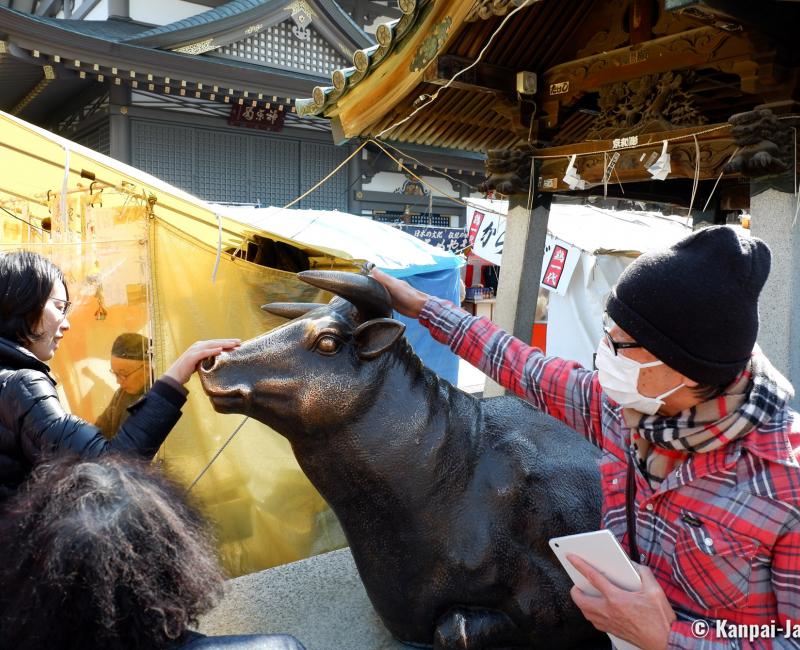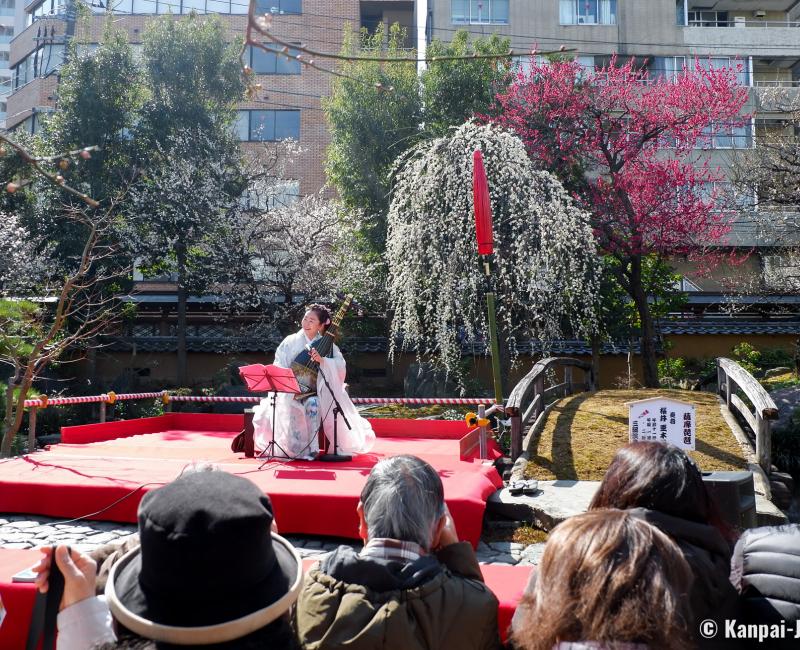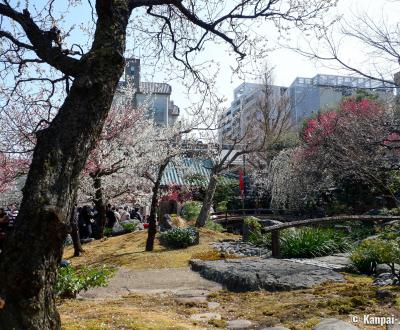Yushima Tenmangu
The Plum Trees Shrine in Ueno
Yushima Tenmangu is a Shinto shrine located near Ueno Park and Tokyo University, in Bunkyo ward. Each year from February to early March a festival called Ume matsuri is held to celebrate the blooming of its Japanese plum trees. The rest of the year, visitors come to pray for academic success or healing.
The shrine was founded in 458 to worship Ameno-Tajikarao-no-Mikoto, a shintoist deity fostering agriculture and who is said to have lured out sun goddess Amaterasu from the cave she was hiding in, thus helping to give the sunlight back to the world. Later in 1355, Sugawara no Michizane (845-903), a great Japanese man of letters who died in exile in Kyushu, was enshrined. He was deified under the name of Tenjin and became the protector of studies and learning. Even today, he is still the recipient of students’ prayers for academic achievements.
The shrine is set up on a hill, in the heart of a residential area, and is accessible by two entrances:
- From Kasuga-dori, by a quite discreet door and a couple of steps; or,
- From Gakumon no Michi ("the path to learning") street, near Yushima subway station, by two big stairways lined with countless plum trees (or Japanese apricots). The stairs climb up to a concrete torii ⛩️ gate that marks the entrance of the sacred enclosure.
Today’s main hall’s appearance dates back to 1478. Its elegant style delicately coalesces a rich and detailed ornamentation with a sober cedar tree Japanese architecture and was preserved by the last ritual reconstruction in 1995. A nice wooden bridge connects the building to the shrine’s offices.

Tenjin’s continuing cult
Near the main hall stands a literal wall of ema. Those are votive plates on which a wish or a prayer was written. They are hanged on a rack so that their message is transmitted to the kami, the recipient deity. In Yushima Tenman-gu, ema plates are so numerous that they are stacked up to one meter width, demonstrating Tenjin’s popularity as the provider of academic success.
Another important element of the shrine is the statue of an ox, one of Michizane’s favorite animals, and Tenjin’s messenger. Its head was polished by the visitors’ hands who pet it when praying for healing.
The authenticity of a popular ume festival
The plum trees of all kinds scattered in the various small green spaces give a unique charm to the shrine, especially in February during their blooming season. Then, the place is adorned with exceptional hues of white, or light and deep pink, attracting visitors who want to enjoy the traditional plum trees festival, Ume matsuri.

During the festival, many food stalls display a lot of typical dishes such as: takoyaki (octopus balls), okonomiyaki (cabbage omelets), skewered meat, karaage fried chicken. If you are lucky, you may spot a Shinto wedding ceremony, attend to short Japanese theatre plays, or on the weekend, concerts of traditional music. The laid-back atmosphere of the plebeian Ueno neighborhood influences the local matsuri as well.
On a side note, the 2019 edition of the umeshu festival was held in Yushima Tenman-gu. It was a fair dedicated to umeshu, a very popular liquor with 8 to 15% alcohol made from plums, that resembles plum wine with a fruity aroma, and very sweet.
In November, the shrines also welcomes another event related to flowers with the display of about 2,000 chrysanthemums for Kiku matsuri.
Beside festivals, Yushima Tenman-gu is rather quiet. It is a calm and pleasant visit near Ueno Park, with very few tourists.

